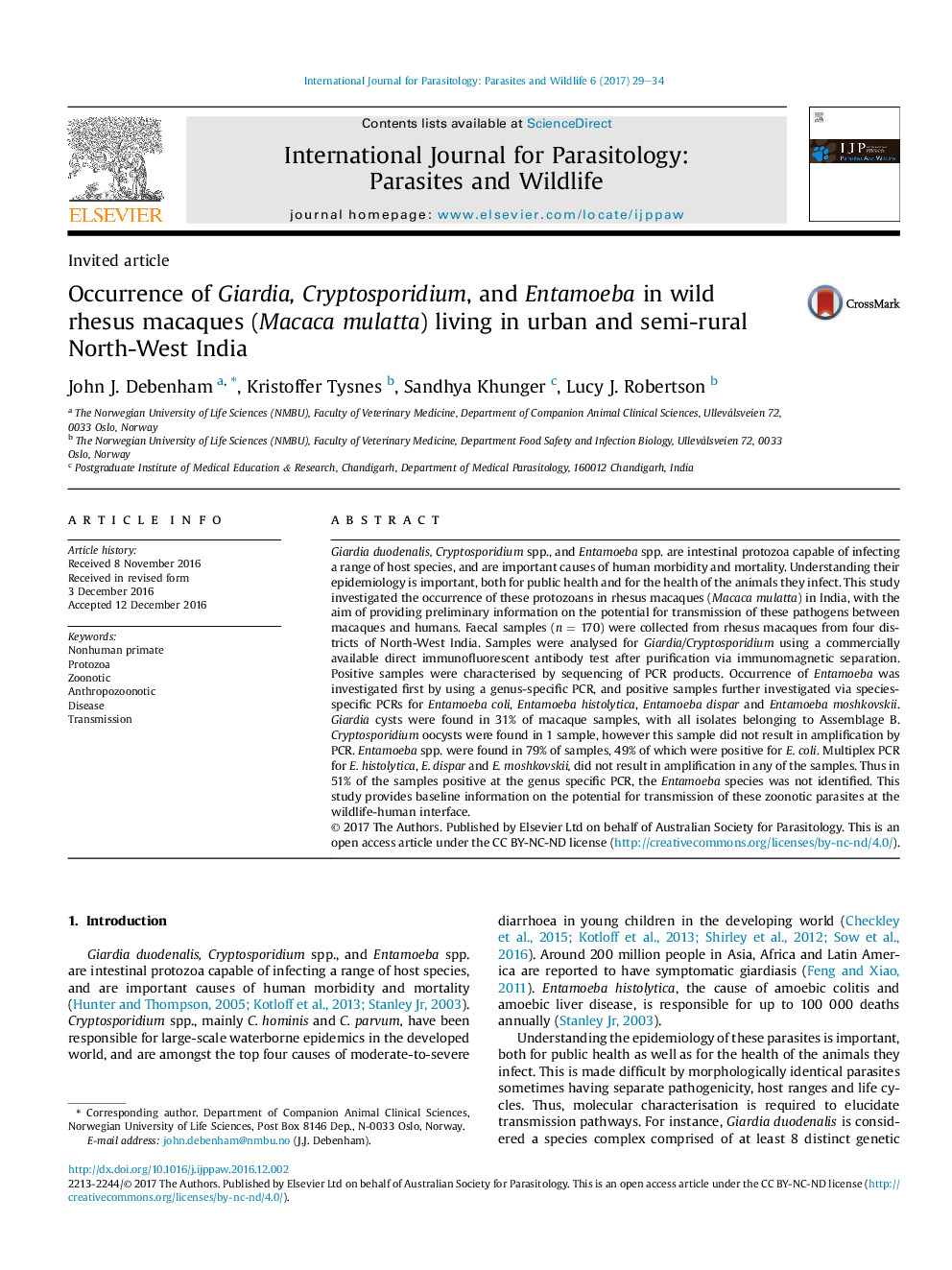| Article ID | Journal | Published Year | Pages | File Type |
|---|---|---|---|---|
| 5517939 | International Journal for Parasitology: Parasites and Wildlife | 2017 | 6 Pages |
â¢Intestinal protozoa in wild rhesus macaques (n = 170) in India investigated.â¢Cryptosporidium oocysts identified in only one sample.â¢No zoonotic Entamoeba detected, but Entamoeba coli and unknown Entamoeba spp.â¢Giardia duodenalis cysts detected in approximately 30% samples.â¢Only Assemblage B Giardia, even when exposure to Assemblages A and E in calves.
Giardia duodenalis, Cryptosporidium spp., and Entamoeba spp. are intestinal protozoa capable of infecting a range of host species, and are important causes of human morbidity and mortality. Understanding their epidemiology is important, both for public health and for the health of the animals they infect. This study investigated the occurrence of these protozoans in rhesus macaques (Macaca mulatta) in India, with the aim of providing preliminary information on the potential for transmission of these pathogens between macaques and humans. Faecal samples (n = 170) were collected from rhesus macaques from four districts of North-West India. Samples were analysed for Giardia/Cryptosporidium using a commercially available direct immunofluorescent antibody test after purification via immunomagnetic separation. Positive samples were characterised by sequencing of PCR products. Occurrence of Entamoeba was investigated first by using a genus-specific PCR, and positive samples further investigated via species-specific PCRs for Entamoeba coli, Entamoeba histolytica, Entamoeba dispar and Entamoeba moshkovskii. Giardia cysts were found in 31% of macaque samples, with all isolates belonging to Assemblage B. Cryptosporidium oocysts were found in 1 sample, however this sample did not result in amplification by PCR. Entamoeba spp. were found in 79% of samples, 49% of which were positive for E. coli. Multiplex PCR for E. histolytica, E. dispar and E. moshkovskii, did not result in amplification in any of the samples. Thus in 51% of the samples positive at the genus specific PCR, the Entamoeba species was not identified. This study provides baseline information on the potential for transmission of these zoonotic parasites at the wildlife-human interface.
Graphical abstractDownload high-res image (117KB)Download full-size image
